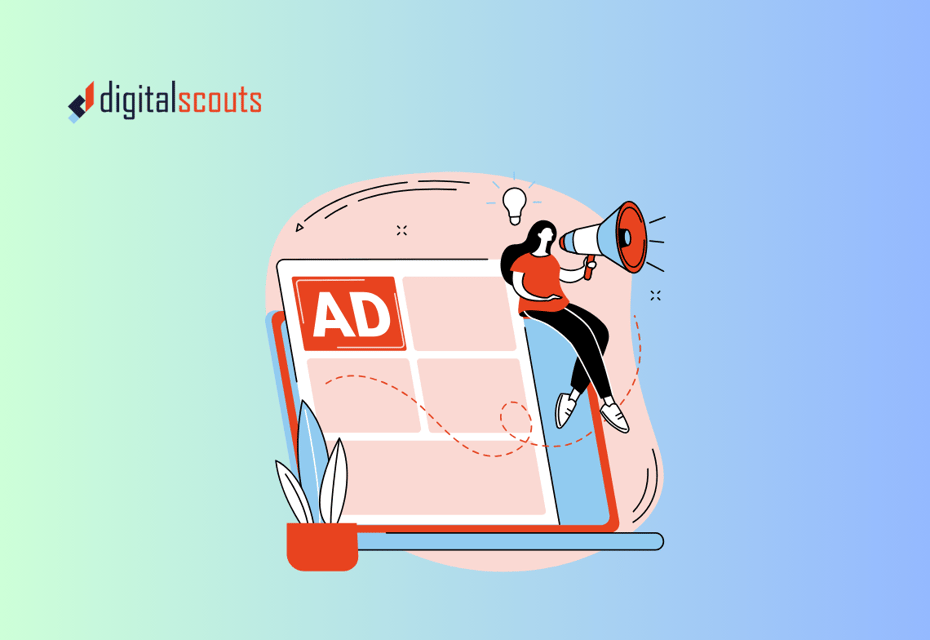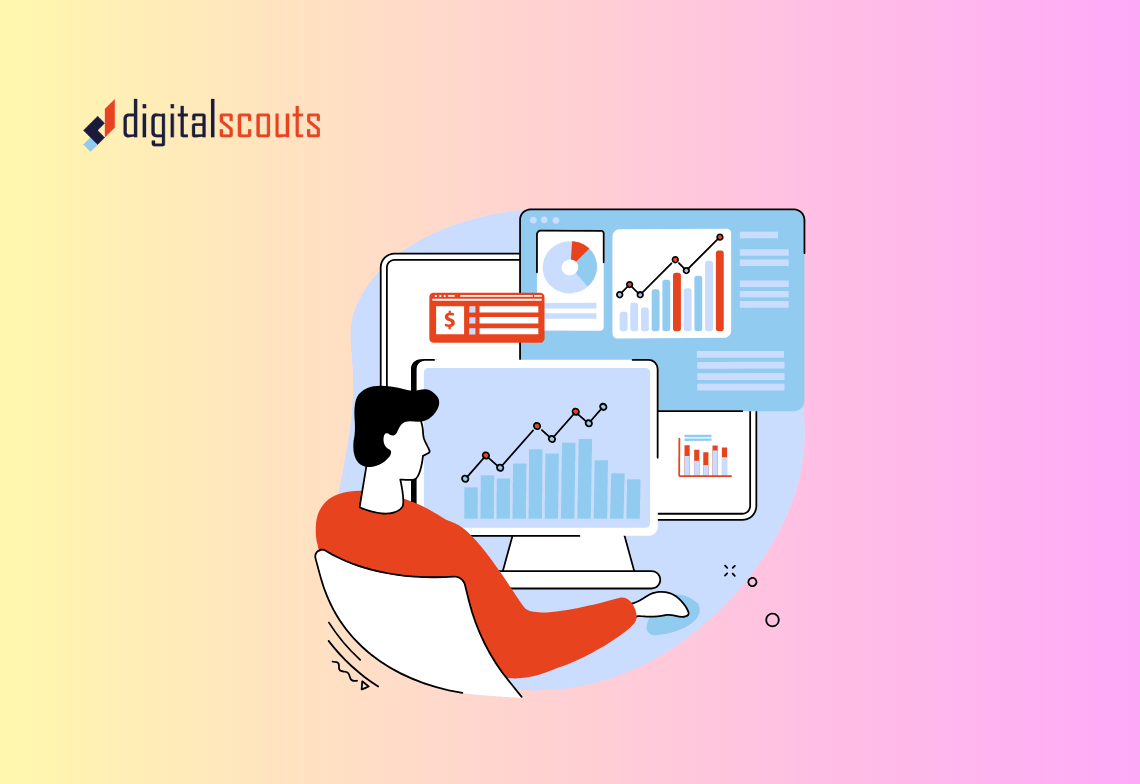Many B2B teams spend thousands on paid campaigns every month but struggle to see real pipeline growth.
Leads come in, forms are filled, and reports look good on paper. Yet when sales teams review those leads, most do not convert. The reason is simple. Most paid media strategies are built for lead capture, not demand generation.
True demand generation goes beyond collecting names. It builds awareness, trust, and intent — the foundation for sustainable pipeline growth.
In this guide, we will explore how to shift your paid media strategy from chasing leads to creating demand. You will learn how to align campaigns with real buyer intent, how to use LinkedIn Ads effectively for B2B, and how to measure success beyond the form fill.
Why Traditional Paid Media Falls Short
For years, B2B marketers have measured success by the number of leads generated. Campaigns were optimised for cost per click or cost per lead rather than the quality of engagement or pipeline contribution.
This short-term view has two main problems.
1. It measures activity, not outcomes
You can drive hundreds of form submissions without generating a single opportunity. Many contacts who download a whitepaper are not ready to buy.
2. It disrupts the buyer journey
Forcing gated content or lead capture too early interrupts how B2B buyers actually make decisions. Today’s buyers conduct independent research and engage when they are ready — not when your form demands it.
The result is misalignment between marketing and sales, wasted ad spend, and unreliable forecasting.
The New Role of Paid Media in B2B
Paid media still plays a vital role, but its purpose has evolved.
Instead of focusing only on demand capture — the bottom of the funnel where buyers are already looking — you also need to invest in demand creation at the top and middle stages.
Demand creation builds awareness and interest among your target audience before they enter the buying cycle.
The new B2B paid media framework
-
Demand Creation: Educate and inspire your audience with ungated, helpful content.
-
Demand Acceleration: Retarget and nurture engaged audiences with deeper insights.
-
Demand Capture: Offer product-specific or intent-driven CTAs for buyers ready to act.
Balancing all three ensures that your paid media supports long-term growth, not just short-term leads.
Step 1: Start With the Right Audience
The foundation of effective paid media is targeting the right audience.
Define your ideal customer profile (ICP)
Your ICP should describe the companies and roles that are most likely to buy from you. Consider:
-
Industry and company size
-
Job titles and responsibilities
-
Common challenges and pain points
-
Buying triggers and motivations
Once defined, align this profile across marketing, sales, and operations. This ensures that every campaign targets the same audience with consistent messaging.
Build audiences that match intent
Use first-party CRM data, website analytics, and customer feedback to create segments such as:
-
Existing customers for upsell or cross-sell
-
Engaged website visitors for retargeting
-
High-fit prospects for awareness campaigns
With LinkedIn Ads, you can match company lists from your CRM directly to ad audiences, ensuring you reach real decision-makers, not generic users.
Step 2: Shift From Gated to Value-Driven Content
Gated content once served as the main source of lead generation. But B2B buyers are becoming more selective about sharing their data.
To build trust and awareness, focus on value-first content that your audience can access freely.
Examples of value-driven content
-
Short videos that explain solutions or trends
-
Thought leadership articles and guides
-
Industry benchmarks or mini case studies
-
Carousel posts showcasing insights or checklists
When to use gated content
Save your forms for high-intent offers such as product demos, consultations, or ROI calculators.
Ungated content attracts interest and builds credibility, while gated assets convert when intent is already high. This creates a natural progression that aligns with real buyer behaviour.
Step 3: Use LinkedIn Ads to Create and Capture Demand
LinkedIn remains one of the most powerful channels for B2B paid media. It combines professional data, precise targeting, and content-rich ad formats.
How to use LinkedIn for demand generation
-
Top of Funnel (Demand Creation): Promote insights, trends, or educational content that positions your brand as a trusted expert.
-
Middle of Funnel (Demand Acceleration): Retarget engaged users with case studies, success stories, or comparison content.
-
Bottom of Funnel (Demand Capture): Offer direct CTAs such as demo requests, event registrations, or free trials.
Recommended LinkedIn ad formats
-
Video Ads: Ideal for thought leadership and storytelling.
-
Carousel Ads: Great for sharing multiple insights or visual case studies.
-
Document Ads: Allow users to preview resources directly in the feed.
-
Conversation Ads: Enable personalised, chat-style engagement with clear next steps.
LinkedIn’s analytics make it easy to measure engagement and retarget based on specific interactions, creating a continuous loop between awareness and conversion.
Step 4: Optimise Creative for Engagement, Not Just Clicks
Your audience sees hundreds of ads each week. To stand out, your creative needs to focus on clarity and authenticity rather than cleverness or overproduction.
Creative best practices for B2B paid campaigns
-
Keep visuals simple and focused on one key idea.
-
Use plain language that sounds like your customers, not corporate jargon.
-
Highlight pain points your audience recognises immediately.
-
Include social proof such as quotes, statistics, or recognisable client logos.
-
End with a clear next step that matches the stage of intent.
When your ads look and sound like they were made for real people, engagement increases naturally — and engagement is what fuels future pipeline.
Step 5: Connect Paid Campaigns to RevOps
To make paid media work for demand generation, marketing, sales, and operations need shared visibility.
How to align paid media with RevOps
-
Use a connected CRM: HubSpot or similar tools integrate ad data with contact and deal records.
-
Track lifecycle stages: See how leads progress from awareness to opportunity to customer.
-
Automate follow-up: Trigger workflows based on engagement or intent signals.
-
Report on pipeline impact: Measure how paid campaigns influence revenue, not just leads.
Example
A B2B SaaS company runs LinkedIn video campaigns to drive awareness among IT decision-makers. Retargeted audiences later receive demo ads. HubSpot tracks engagement from first ad view to deal creation, showing that paid media influenced 35 percent of new opportunities that quarter.
By connecting data across systems, the company can confidently invest in what works and scale its demand engine.
Step 6: Build a Demand Generation Funnel
Paid media should not exist in isolation. It should connect seamlessly with your broader marketing and sales funnel.
Funnel structure for demand generation
-
Attract: Reach your ICP with educational or thought leadership content.
-
Engage: Use retargeting and nurture sequences to deepen interest.
-
Convert: Offer product-focused CTAs to buyers who are ready to act.
-
Measure: Analyse campaign and lifecycle data to identify high-performing segments.
A connected funnel ensures that every dollar spent on paid media contributes to a measurable outcome — from awareness to opportunity to revenue.
Step 7: Measure Success Beyond the Form Fill
Success in demand generation is not measured by the number of leads but by the quality of pipeline created.
Key metrics to track
-
Engagement rate: How your audience interacts with content.
-
Reach among ICP: How effectively you target your ideal accounts.
-
Cost per opportunity: How efficiently your ads contribute to pipeline.
-
Pipeline velocity: How quickly opportunities move through stages.
-
Revenue influence: How paid campaigns contribute to closed deals.
These metrics help you understand the full impact of paid media across the buyer journey, not just at the point of capture.
Digitalscouts often helps clients build RevOps dashboards that visualise these metrics in real time, connecting ad spend directly to revenue performance.
Step 8: Test, Learn, and Optimise
A successful demand generation program evolves continuously.
Optimisation checklist
-
Test new creative concepts every month.
-
Compare audience segments for engagement and conversion.
-
Adjust budgets toward campaigns that influence pipeline most effectively.
-
Review messaging with sales feedback to ensure alignment.
-
Analyse attribution models to understand multi-touch impact.
Regular iteration ensures that your paid media strategy remains efficient, relevant, and scalable.
Step 9: Integrate Retention Into Your Paid Media Strategy
Demand generation does not stop after acquisition.
Paid media can also play a role in customer retention and expansion.
Use paid campaigns to
-
Promote new features or product updates to existing customers.
-
Share customer success stories that reinforce value.
-
Target existing accounts with cross-sell or upsell offers.
This approach turns paid media into a full-funnel growth engine that supports marketing, sales, and customer success together.
Common Paid Media Mistakes
-
Focusing only on short-term lead generation
-
Targeting too broad or generic audiences
-
Ignoring the middle of the funnel
-
Using the same creative for every segment
-
Failing to measure pipeline impact
Avoiding these mistakes ensures that your ad spend contributes to sustainable growth instead of vanity metrics.
Bringing It All Together
Paid media should not be a siloed lead generation tool. It should be a central part of your demand generation engine.
When built with a RevOps mindset, paid campaigns connect marketing, sales, and operations around shared goals — creating demand, capturing intent, and converting pipeline consistently.
LinkedIn Ads, when paired with strong content and clear measurement, can help you reach the right audience and nurture them from awareness to decision.
Digitalscouts helps B2B companies design and optimise paid media strategies that align with full-funnel demand generation goals. We focus on connecting every impression, click, and conversation to measurable revenue outcomes.
If you want paid media that fuels long-term demand instead of short-term leads, we can help you design a strategy that scales sustainably.
Frequently Asked Questions
About Author
Ashish is a B2B growth strategist who helps scaleups align marketing and sales through Account-Based Marketing (ABM), RevOps, and automation. At DigitalScouts, he builds scalable content engines, streamlines lead flows with HubSpot, and runs targeted GTM programs to drive predictable pipeline. He regularly shares insights on using AI and automation to power ABM and accelerate complex buyer journeys.








